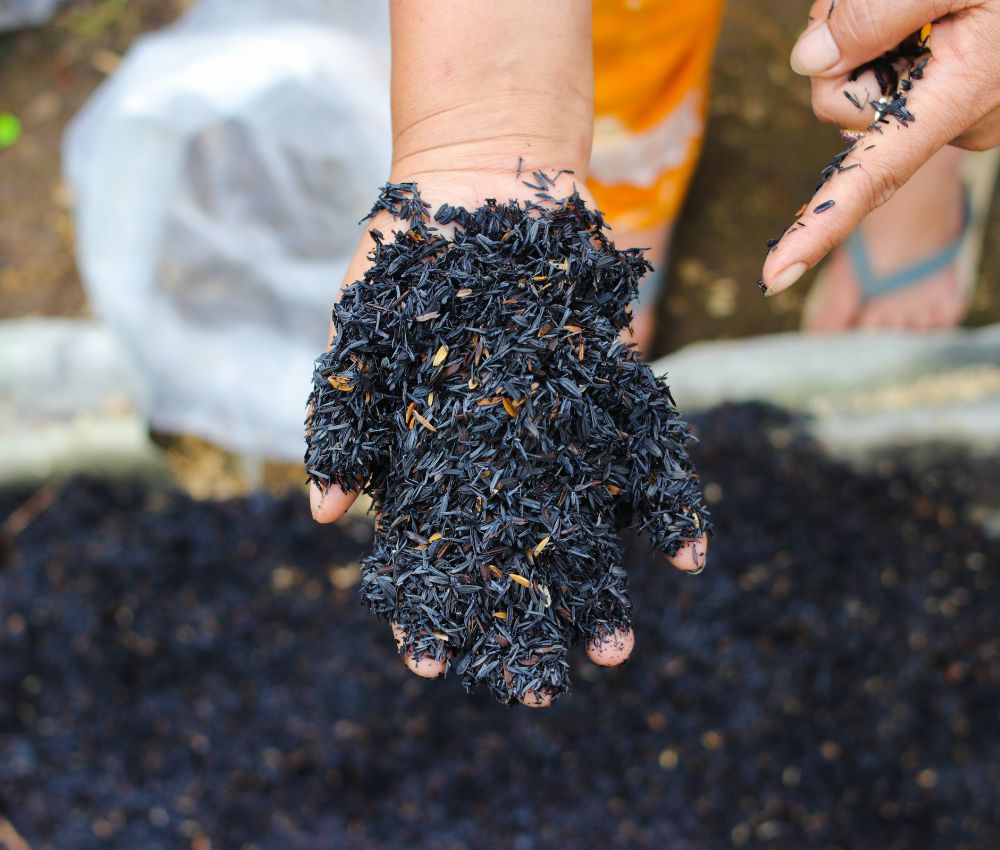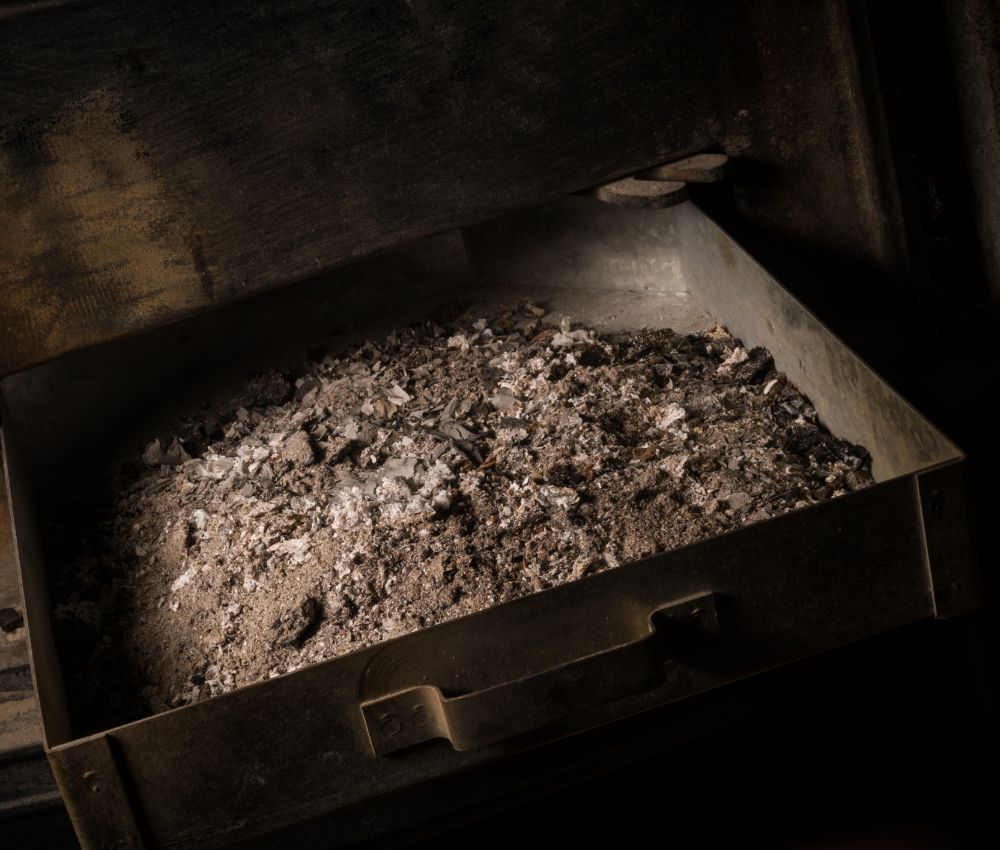Creative Ideas: What to Do with Ashes from Fireplace

What to do with ashes from fireplace. Regarding your fireplace, the ashes left behind after a cozy night can seem like nothing more than a nuisance. However, with some creativity and knowledge of safe disposal, you can transform these ashes into valuable resources. In this section, you will discover various creative ideas for what to do with ashes from your fireplace and safe methods for disposing of them.
By exploring alternative uses for fireplace ashes, you can reduce waste and benefit your household and garden. Whether you’re a DIY enthusiast or a gardening hobbyist, there are numerous opportunities to use ashes. From enriching your soil to cleaning your home, the possibilities are endless.
In the following sections, we’ll explore the benefits of using fireplace ashes, precautions to keep in mind, and tips for collecting and storing ashes. So, let’s dive in and discover the many creative uses for fireplace ashes!
Table of Contents
Gardening with Fireplace Ashes

Gardening is a great option if you’re looking for a way to put your fireplace ashes to good use. Fireplace ashes are rich in essential nutrients that can help your garden thrive and can be used in various other ways. Here are some tips for gardening with fireplace ashes:
1. Using Fireplace Ashes as Fertilizer
Fireplace ashes can be used as a natural fertilizer to enrich soil. Sprinkle a small amount of ashes around the base of plants, being careful not to use too much as it can alter the soil’s pH levels. Ashes can also be added to compost piles to speed up the decomposition process and add valuable nutrients to the resulting compost.
2. Neutralizing Soil pH
If your soil is too acidic, adding fireplace ashes can help to balance its pH levels. This is particularly helpful for crops that prefer a more alkaline soil, such as beets, broccoli, and spinach. However, be cautious not to add too much ashes, as this can make the soil too alkaline and inhibit plant growth.
3. Repelling Pests
Some pests, such as slugs and snails, are deterred by fireplace ashes. Sprinkling a ring of ashes around young plants can protect them from being eaten by these pests. However, avoid using ashes near seedlings, as they can inhibit germination.
4. Other Alternative Uses for Fireplace Ashes
In addition to gardening, there are several other alternative uses for fireplace ashes. They can be used to de-ice sidewalks and driveways, polish silver and copper, or even as a non-toxic insect repellent. First, test any new use on a small area to avoid unwanted damage.
As you can see, using fireplace ashes in your gardening routine has plenty of benefits. Not only can they help improve soil fertility and plant growth, but they can also be used in several alternative ways around your home. So, the next time you clean out your fireplace, don’t throw away the ashes – put them to good use in your garden!
Composting Fireplace Ashes

Composting is an excellent option if you’re looking for an eco-friendly way to dispose of fireplace ashes. Composting helps you recycle your waste and benefits the environment and your garden. However, not all ashes can be added to the compost pile. Taking precautions when composting ashes is essential to avoid potential harm to your plants or the environment.
What You Can Compost
The first step to composting ashes is determining whether they suit your compost pile. Wood ashes are a great addition to your compost because they contain essential nutrients like calcium, potassium, and magnesium. These nutrients help your compost break down more efficiently, producing nutrient-rich soil for your plants.
However, avoid composting ashes from charcoal or briquettes, which may contain chemicals that can harm the environment or your plants. Also, make sure that the ashes are cool and free of any debris before composting.
How to Compost Ashes
Once you have collected the suitable ashes, it’s time to add them to your compost pile. The key is to add the ashes in moderation, as too much can affect the pH level of your compost. Experts recommend adding no more than 10-15% of ashes to your compost pile.
Mixing the ashes with other compost materials, such as leaves, grass clippings, or kitchen scraps, is crucial to ensure that the ashes are well-distributed. This helps avoid the formation of clumps that can prevent air and water from reaching the compost pile, resulting in poor decomposition.
Benefits of Composting Ashes
Incorporating ashes into your compost pile can provide multiple benefits for your garden. The essential nutrients found in wood ashes can help improve the overall health and fertility of the soil, resulting in healthier plants and better yields. Ashes can also help balance the pH levels in acidic soil, making it more alkaline, essential for growing certain plants. In addition, composting ashes can help reduce the amount of waste sent to landfills while promoting a more sustainable lifestyle.
Overview
Composting fireplace ashes is an excellent way to recycle waste, benefit your garden, and help the environment. Composting ashes can turn your waste into a valuable resource for your garden and contribute to a more sustainable lifestyle. Remember to take necessary precautions, add ashes in moderation, and mix with other compost materials to ensure proper distribution.
Cleaning with Fireplace Ashes
Did you know that fireplace ashes can be useful for cleaning? Instead of throwing them away, put them to good use. Here are some ways to utilize fireplace ashes for cleaning:
- Cleaning glass: Mix fireplace ashes with water to make a paste and use it to scrub glass surfaces. Rinse with water and dry with a clean cloth.
- Polishing metals: Use a damp cloth dipped in fireplace ashes to polish brass, silver, and other metals. Rinse with water and dry with a clean cloth.
- Removing stains: Fireplace ashes can effectively remove stubborn stains on concrete and pavement. Mix ashes with water and scrub the affected area with a brush. Rinse with water and repeat if necessary.
Remember to wear gloves and avoid using ashes on delicate surfaces that may scratch easily. Also, properly dispose of any leftover ash once you’re finished cleaning.
DIY Projects with Fireplace Ashes
Did you know that you can create unique and eco-friendly DIY projects using ashes from your fireplace? Here are some creative ideas to get you started:
1. Soap Making
Ashes can be used in the homemade soap-making process to create a lye solution that hardens and cleanses the soap. Combine ashes with water to create a lye mixture, which is then added to the melted soap base to make unique soap bars.
2. Pottery Glazing
Add ashes to pottery glazes to give them a unique, textured finish. Depending on the type of wood used in your fireplace, the ashes can produce colors from green to purple.
3. Ink Making
Did you know that you can make your ink using ashes? Combine ashes with water and a binder like gum Arabic to create a natural, eco-friendly ink that can be used for calligraphy or other artistic pursuits.
4. Candle Making
Use ashes to create your unique candles with a rustic, textured look. Melt candle wax and add ashes to the mixture, then pour into candle molds and cool.
Safe Disposal of Fireplace Ashes
Proper disposal of fireplace ashes is crucial for ensuring your home’s and the environment’s safety. Follow these precautions to avoid potential fire hazards and damage.
Wait for a complete cool-down
The first step in safe disposal is ensuring the ashes have completely cooled down. This process may take several days, depending on the ash produced.
Use appropriate containers
Steer clear of plastic or paper bags due to their flammability, and consider using a metal container equipped with a well-fitting lid for the safe storage and transportation of ashes. Remember to visibly mark the container as holding ashes.
Avoid placing ashes in the trash or recycling bin
Putting ashes in the trash or recycling bin can be dangerous, as they may reignite and cause a fire. Place ashes in a separate container and keep them away from flammable materials.
Don’t dump ashes on the ground
Never dump ashes on the ground, as they can harm the environment and cause a fire. Dispose of ashes in a designated area, such as a fire pit or a designated ash bin.
Consider composting
Composting fireplace ashes can be eco-friendly, but it must be done carefully. Ashes should be limited to 10% of the overall volume of the compost pile and should never be added directly to plants that prefer acidic soil.
Following these safety measures, you can safely dispose of fireplace ashes and reduce the fire risk and environmental damage.
Recycling Fireplace Ashes

Did you know that fireplace ashes can have a second life beyond their primary use as a heat source? Recycling fireplace ashes is a great option for those looking to reduce their environmental footprint and maximize the potential of ash waste. Here are some innovative ways to repurpose fireplace ashes.
Use in Compost
Fireplace ashes can be a valuable addition to compost piles. They help to balance the pH levels of acidic soil and provide essential nutrients such as calcium, potassium, and phosphorus. However, using ashes in moderation is essential, avoiding adding ashes from treated wood or painted surfaces that may contain harmful chemicals. Mix them thoroughly with other compost ingredients such as leaves, grass clippings, and food waste.
Create Homemade Soap
Ashes from hardwood contain a high lye concentration, a key ingredient in soap making. You can create a lye solution by mixing fireplace ashes with water to make a potassium hydroxide solution. This solution can then be mixed with fat to create soap. However, it’s crucial to use gloves and protective gear when working with lye, as it can be hazardous if not handled correctly.
Fertilize your Garden
Wood ashes can be a natural fertilizer for your garden and lawn. They help to neutralize acidic soil and promote healthier plant growth. Sprinkle a small amount of ashes around the base of plants and water to penetrate the soil. Be careful not to overuse ashes, as they can raise the pH levels too high and cause damage to plants.
Repel Pests
Ashes can be a natural deterrent for pests such as slugs and snails. Sprinkle a small amount of ashes around the base of plants to create a barrier that pests won’t cross. However, be careful not to apply too much ash, which can repel beneficial insects and harm the soil’s natural ecosystem.
Conclusion
Recycling fireplace ashes can be an eco-friendly solution that provides numerous benefits, from improving soil fertility to repelling pests and even creating homemade soap. Use ashes in moderation and avoid adding treated or painted wood to compost piles. You can positively contribute to the environment and your household routines by repurposing your fireplace ashes.
Precautions When Using Fireplace Ashes
While fireplace ashes have numerous potential uses, taking necessary precautions to ensure safety when handling and disposing of them is important.
- Always wear gloves and a mask when handling ashes to avoid skin irritation and inhaling ash particles.
- Wait 24 hours after your last fire to collect ashes, allowing them to cool down completely before handling.
- Never dispose of ashes in a plastic container or bag, as they can melt or catch fire.
Tip: Use a metal container with a tight-fitting lid to store ashes temporarily. Keep the container away from flammable materials and surfaces.
- Avoid direct contact with plant roots when using ashes in your garden or compost pile, as the high alkalinity can damage them.
- Never mix ashes with other chemicals or substances, which can cause dangerous chemical reactions.
- Dispose of ashes in a safe location away from flammable objects, such as in a metal bucket or ash can with a lid, and always douse with water to ensure they are fully extinguished.
Following these precautions, you can safely use fireplace ashes without risking your safety or the environment.
Benefits of Using Fireplace Ashes
Did you know fireplace ashes can be valuable for your garden and household? Instead of throwing them away, consider the following creative uses for fireplace ashes:
- Enriching your garden soil: Fireplace ashes contain potassium, calcium, and magnesium, which are essential nutrients for plants. Adding them to the soil can increase fertility and improve plant growth.
- Repelling pests: Sprinkle fireplace ashes around your garden to deter slugs, snails, and other pests. Ashes can also help keep cats and dogs out of your garden beds.
- Cleaning: As mentioned in a previous section, ashes can be used as a natural cleaning agent. They can polish metals, clean glass, and remove fabric stains.
- DIY projects: Fireplace ashes can be incorporated into various DIY projects. They can create homemade soap, pottery glazes, or even eco-friendly ink.
By utilizing fireplace ashes, you reduce waste and contribute to a more sustainable lifestyle. Remember to handle and store ashes safely to avoid potential risks or accidents. Start exploring the possibilities of using fireplace ashes today!
Tips for Collecting and Storing Fireplace Ashes

When it comes to utilizing fireplace ashes, proper collection and storage methods are crucial. Follow these tips to ensure your ashes remain safe to use and dispose of:
1. Wait Until Ashes are Cold
Only attempt to collect ashes from your fireplace once they are completely cooled down. Hot ashes can cause severe burns and even start fires. Allow your fireplace to cool for at least 24 hours before attempting to collect ashes.
2. Use a Metal Container
Choose a metal container with a tight-fitting lid to store your fireplace ashes. Avoid plastic or paper containers, which can melt or catch fire from residual heat. Keep the container away from combustible materials, and store it in a cool, dry place.
3. Keep Ashes Dry
Moisture can cause ashes to clump together, making them difficult to use and dispose of. Keep your ashes dry by covering them with the lid of the container and storing them indoors. Avoid storing ashes outside or in areas that are prone to moisture.
4. Use Gloves and a Mask
Protect your skin and lungs by wearing gloves and a mask when handling fireplace ashes. Fine ash particles can cause respiratory issues and skin irritation. Use a dust mask and gloves to protect yourself from any harmful particles.
5. Avoid Mixing Ashes with Other Materials
Never mix ashes with other materials, such as charcoal or wood chips. This can cause unwanted chemical reactions and make the ashes unsafe for use. Keep your ashes separate from other materials until you are ready to use or dispose of them.
6. Reuse Ashes Sparingly
Fireplace ashes can be useful in many applications, but using them sparingly is best. Too much ash can alter soil pH levels and cause nutrient imbalances. Use ashes in moderation, and always test the soil before applying.
Following these simple tips, you can safely collect and store your indoor fireplace ashes for future use. Remember always to practice caution and protect yourself when handling ashes. With these proper disposal methods, you can utilize fireplace ashes to their fullest potential.
Conclusion
Congratulations, you have discovered numerous practical and creative ideas for using ashes from your fireplace. Enriching your garden soil, composting, cleaning, undertaking DIY projects, and recycling ashes can turn this waste into valuable resources. Remember to take necessary safety precautions and techniques to properly dispose of and store ashes to prevent accidents and environmental damage. Also, consider the benefits of using fireplace ashes, such as contributing to soil fertility and deterring pests.


